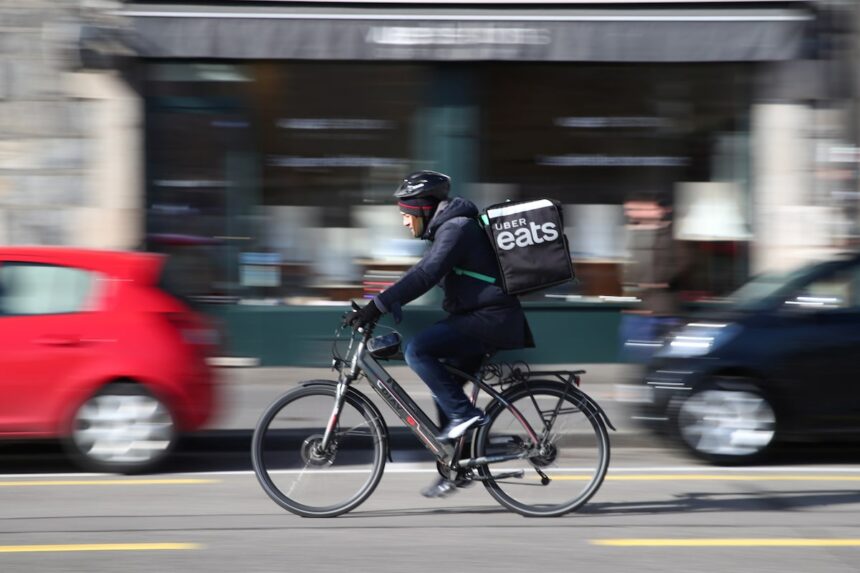In the dimly lit basement apartment of 24-year-old Vancouver software developer Mia Chen, a familiar ritual unfolds almost nightly. The distinctive ping of a delivery notification cuts through the silence as another meal arrives at her doorstep—her third DoorDash order this week. Chen isn’t an outlier; she represents the vanguard of a profound shift in Canada’s consumer landscape.
“I know I could save money by cooking, but after a 10-hour workday staring at code, the last thing I want is to stand in a kitchen for another hour,” Chen explains, scrolling through her delivery app history that reveals over $400 spent last month. “It’s not just convenience—it’s buying back my time.”
New financial data reveals that Canadian Gen Z consumers (those born between 1997 and 2012) are allocating an unprecedented portion of their disposable income to food delivery services—nearly triple the rate of older generations. This spending pattern persists despite inflation pushing delivery costs to record highs, with the average delivered meal now costing 40% more than its in-restaurant counterpart.
The trend reveals complex economic and lifestyle factors at play. While Gen Z faces historically challenging housing markets and significant student debt, their approach to financial priorities differs markedly from previous generations. Rather than focusing exclusively on asset accumulation, many prioritize experience-based spending and time-saving services.
Financial planner Morgan Williams, who specializes in advising younger clients, observes a fundamental shift in mindset. “Previous generations viewed restaurant meals as occasional treats. For many young professionals today, outsourcing food preparation isn’t seen as a luxury but as a practical time management strategy in high-pressure careers with blurred work-life boundaries.”
The surge coincides with dramatic expansion in Canada’s food delivery infrastructure. Since 2019, the number of restaurants on major platforms has increased by 117%, with delivery zones extending well beyond urban cores. Investment in “ghost kitchens”—delivery-only food preparation facilities—has doubled annually for three consecutive years, according to industry data from CO24 Business.
For 26-year-old Toronto paralegal Devon Jackson, the calculation is straightforward. “I bill at $85 an hour. If I spend $25 extra for delivery instead of spending an hour grocery shopping and cooking, I’m actually coming out ahead if I use that time productively,” he reasons, though admitting the reality doesn’t always match the theory.
Not all financial experts view the trend benignly. Retirement planning specialist Elena Morales cautions that seemingly small expenditures compound dramatically over time. “A $30 delivered meal three times weekly instead of a $10 home-cooked alternative represents over $3,100 annually—money that, invested at even modest returns over decades, translates to tens of thousands in lost retirement funds.”
The environmental impact also raises concerns, with single-use packaging and delivery emissions creating substantial carbon footprints. Several Canadian municipalities are now considering regulations targeting delivery waste, as reported in CO24 Breaking News.
The industry itself is responding to Gen Z preferences. UberEats Canada recently launched sustainability initiatives including eco-packaging options and carbon-offset programs specifically targeting younger consumers’ environmental concerns. Meanwhile, subscription models offering reduced fees for regular users have seen 85% year-over-year growth, banking on habit formation over occasional use.
Some Gen Z consumers are finding middle ground. Montreal graphic designer Jules Lavoie implemented a personal “3-2-2” weekly meal plan: three home-cooked meals, two restaurant visits, and two deliveries. “It’s about balance. I budget specifically for convenience foods rather than pretending I’ll suddenly become a meal-prep enthusiast.”
Whether this spending pattern represents a temporary phenomenon or a permanent generational shift remains uncertain. What’s clear is that food delivery has evolved from occasional indulgence to lifestyle cornerstone for many young Canadians, reshaping not just personal finances but the entire food service industry.
As the delivery cyclist pedals away from Chen’s apartment building, she’s already back at her desk, coding. The extra $15 spent on delivery might look wasteful on a spreadsheet, but in the complex calculus of modern life, for many in Gen Z, it somehow adds up.
Sarah Patel is a business and lifestyle reporter for CO24 Sports, specializing in consumer trends and economic analysis.
















